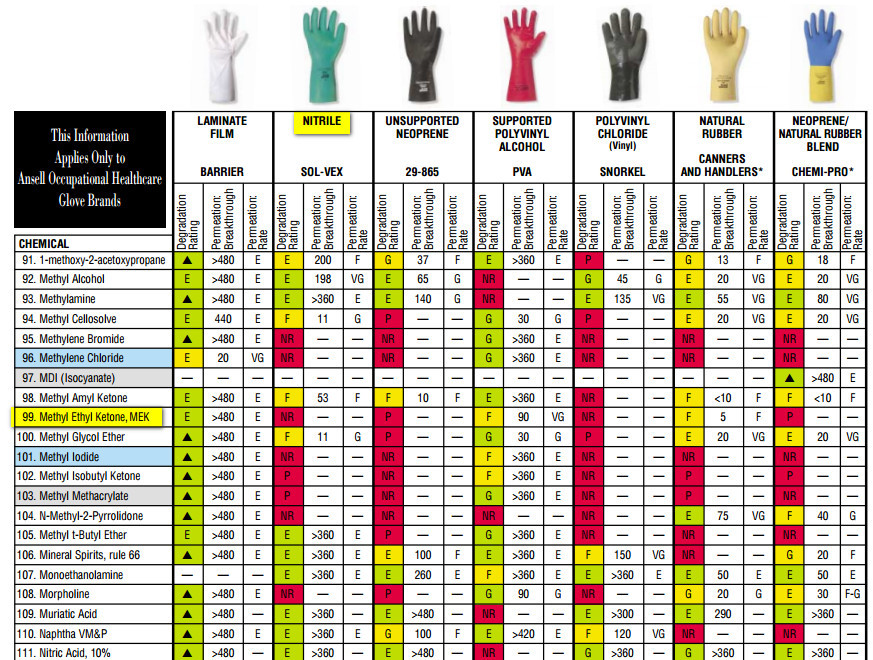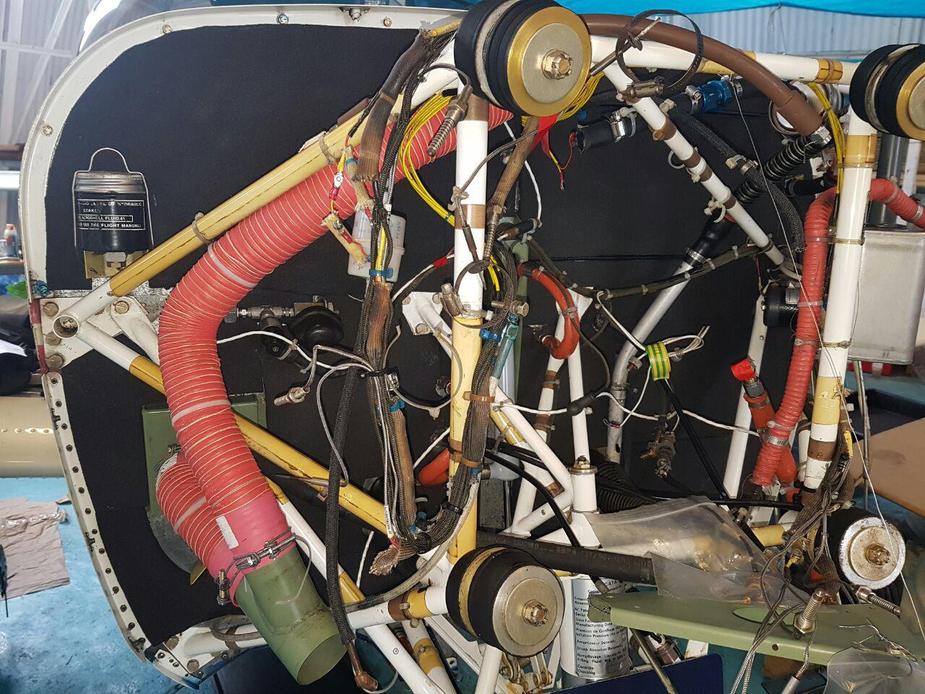Are you sure those “latex” gloves are actual Nitrile gloves? It has to be Nitrile. Latex or rubber or anything else will dissolve fairly quick. Also, I only use acetone for stuff like that. Acetone is less toxic. but do the same job for most parts. MEK can attack the central nervous system, there are no such results for acetone. Acetone is what women use to remove nail paint.
According to this [ local copy ] Nitrile gloves have no resistance to MEK.

Latex (a.k.a. natural rubber) gloves – example – should be OK for a while – about 5 minutes!
I can report that the Scotch-Weld glue above did not work at all on the foam in the top post. If used in the usual way i.e. the glue is applied to the smooth side of the foam, it comes right off.
So we are going to try
I can report that natural rubber gloves withstand MEK just fine and for a lot longer than a few minutes.
My £150 full face mask (with proper solvent filters, brand new) worked well too.
The Scotch-Weld glue was also found to work OK but two coats of it are needed on the foam, due to absorption.
Removing the remains of the crappy Socata firewall foam is an absolute bastard of a job and I can see why almost nobody does it, and most TBs fly with bits of the original foam hanging off the firewall. MEK softens it OK but it needs a mechanical means of scraping it off and you don’t want to use something hard because you will damage the galvanising on the firewall and start corrosion.
Use a hard plastic scraper.
Peter wrote:
because you will damage the galvanising on the firewall and start corrosion
Odd that it is galvanized and not stainless. In any case, galvanization protects the steel by galvanic protection (obviously), the voltage difference between materials. If you cover the outer layer, you have destroyed the protection. But, another thing with galvanic protection, it protects also when there are cracks and holes in the galvanic layer. If you think about it, that is the only time it will protect, because only then is the voltage difference exposed. Also, corrosion requires an electrolyte (water normally, with some salts) + oxygen from the air + a voltage potential between corroding materials (that could be the same material, only with different exposure to air/water).
Galvanizing is good because you can drill holes in the plate without the plate corroding. A painted plate will start corroding once the metal is exposed by a hole or crack in the paint.
Firewall foam done. SX-500 firewall certified foam and the AF-178 glue.

I have the cardboard templates available for a loan 
Someone I am talking to may buy from me the spare SX-500 firewall foam otherwise it will be for sale.
But I also have for sale a complete roll of this stuff complete with the Spruce delivery note evidencing where it came from. No EASA-1 or 8130-3 of course… I used the Scotch glue with that foam, very successfully.
My £150 full face mask (with proper solvent filters, brand new) worked well too.
What is your mask Peter?
Thanks